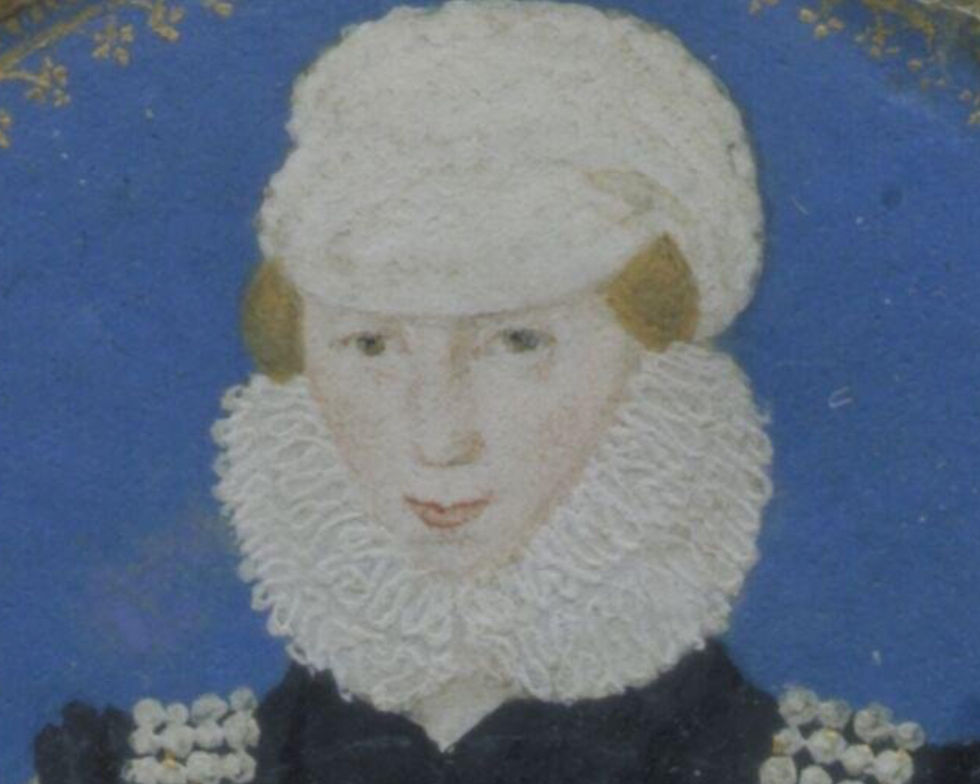ON THIS DAY - 20 April 1578
- thedudleywomen
- Apr 20
- 3 min read
On This Day (20 April) in 1578, Lady Mary Grey, youngest daughter of Henry Grey, 1st Duke of Suffolk and his wife Frances Brandon, and sister to Lady Jane Grey and Katherine Grey, and widow of Sir Thomas Keyes, died at her London home, in the parish of St Botolph-without-Aldgate.

Mary was the youngest daughter of Henry Grey, 1st Duke of Suffolk and his wife Frances Brandon, the niece of Henry VIII, and as such the youngest sister to the ill-fated Jane and Katherine. She was born in 1545, likely at her parents' home of Bradgate Hall, Leicestershire, where she spent most of her early childhood.
Lacking the beauty of her older sister Katherine, as an adult Mary was described as "crook backed and very ugly", later being described as the smallest person at court. However, she did appear to share Katherine's warmth and affection towards others, as well as Jane's intelligence, determination and perseverance.
Following her father's and Jane's executions for treason in 1554, Mary, Katherine and their mother Frances continued to reside together at the Charterhouse at Sheen, until Frances' death in November 1559. Shortly after this, in 1560, both girls were appointed as ladies of the Privy Chamber to the household of their kinswoman Elizabeth I.
Having seen her elder sister Katherine fall from favour due to her secret marriage with Edward Seymour, 1st Earl of Hertford in 1563, in 1564 when aged 19, Mary also fell in love with a man unsuitable for her on many levels - Sir Thomas Keyes. He was a widower twice her age, with many children; a former soldier employed as the Queen's Serjeant Porter. in charge of palace security, who towered over the petite courtier, reportedly being the 'biggest man at court'. Despite their differences in age and rank, an affair was conducted in private, and on 19 Jul 1565, the couple secretly married whilst the queen was attending another wedding. According to the 'Royal Marriage Act of 1536', it was a treasonous act for anyone of royal lineage to marry without the consent of the monarch, and Mary, as her older sisters had been, remained in the line of succession.

News of their marriage became known a month later, and a furious Elizabeth ordered the couple to be separated, never to be reunited. Whilst Keyes was imprisoned in the Fleet Prison, Mary was placed under house arrest; she was held initially at the newly built Chequers, and then taken to the home of her step-grandmother Katherine Bertie, Duchess of Suffolk, in the Minories, near the Tower of London. However, following her sister Katherine Grey's death in January 1569, Mary's place in line of succession became more significant, and so she was moved into the custody of Sir Thomas Gresham, under whose charge she remained for another three years.

In May 1572, after almost 7 years imprisonment, Mary was finally released from house arrest; however, Elizabeth did not release her inheritance, and so after some appeals, the queen agreed to pay Mary an allowance. Initially Mary went to stay with her stepfather Adrian Stokes in Beaumanor, Leicestershire and his new family, until February 1573, when she was able to fund her own house in the parish of St Botolph-Without-Aldgate, just outside the walls of the City of London.
Whilst Mary was denied the opportunity to raise her stepchildren following the death of her husband Sir Thomas Keyes in 1571, she maintained contact with them, as well as other family members and acquaintances, including her brother-in-law Edward Seymour, 1st Earl of Hertford, his sister Lady Elizabeth Seymour, step-grandmother Katherine Bertie, and her children Susan and Peregrine Bertie. By 1577, Mary had also rehabilitated herself in Elizabeth's eyes, being welcomed back to court as one of her Maids-of-Honour.

Mary fell ill when at her home at St Botolph's in April 1578; plague had been spreading throughout the city since the New Year, with deaths increasing as the weeks passed. Knowing the end was near, on 17 April, she wrote her will as "Lady Mary Grey...Widow"; in this she made bequeathments to female relatives, including Katherine and Susan Bertie, and her house servants, and requested to be buried "where the Queen's Majesty shall think most to meet".





Comments